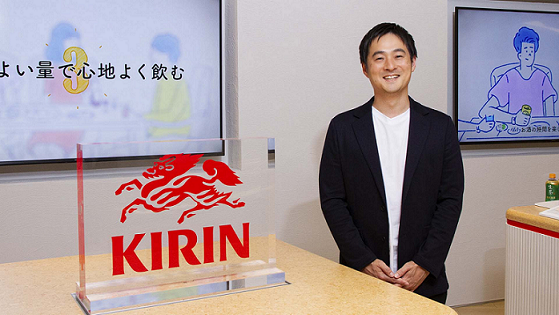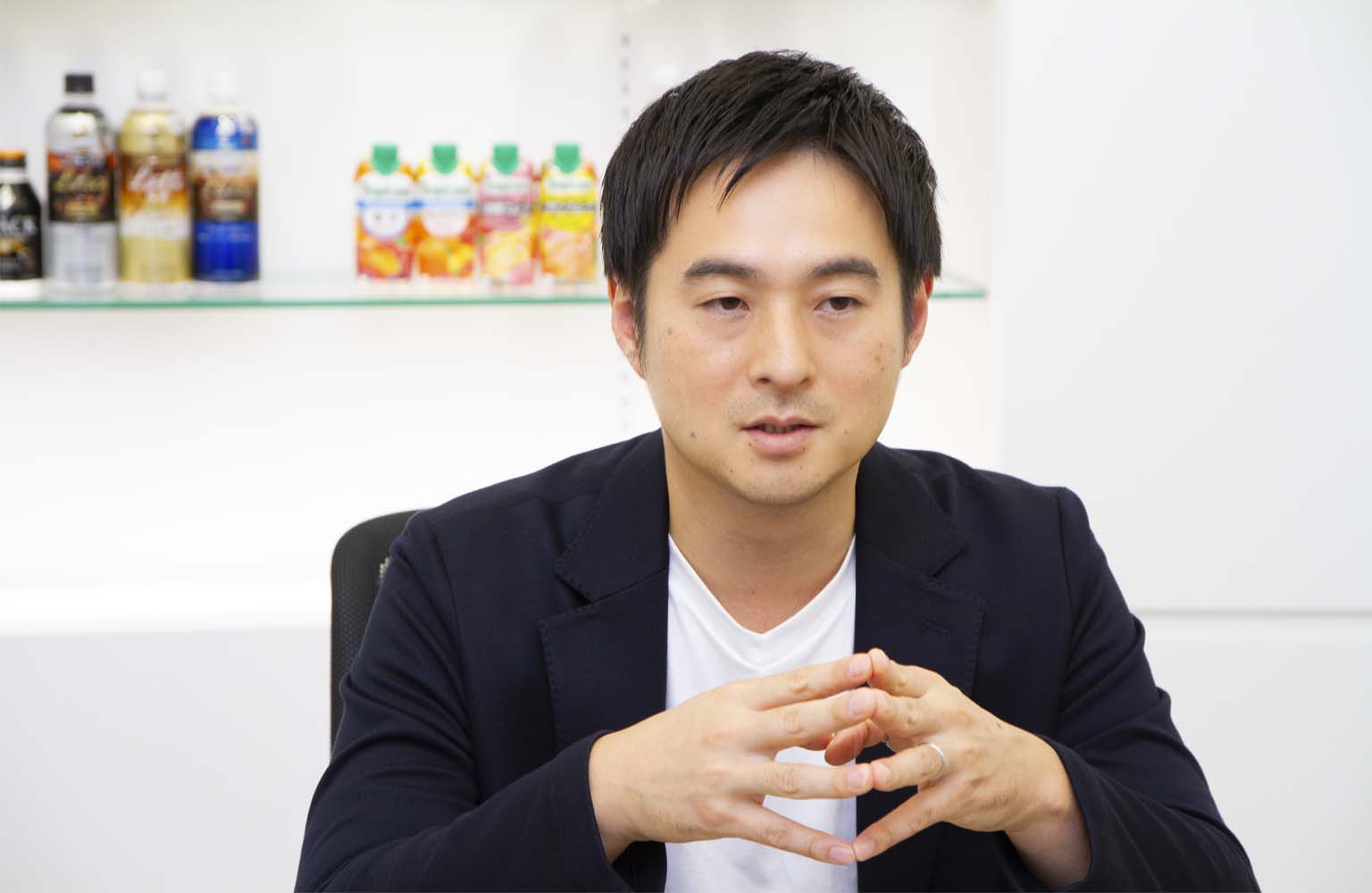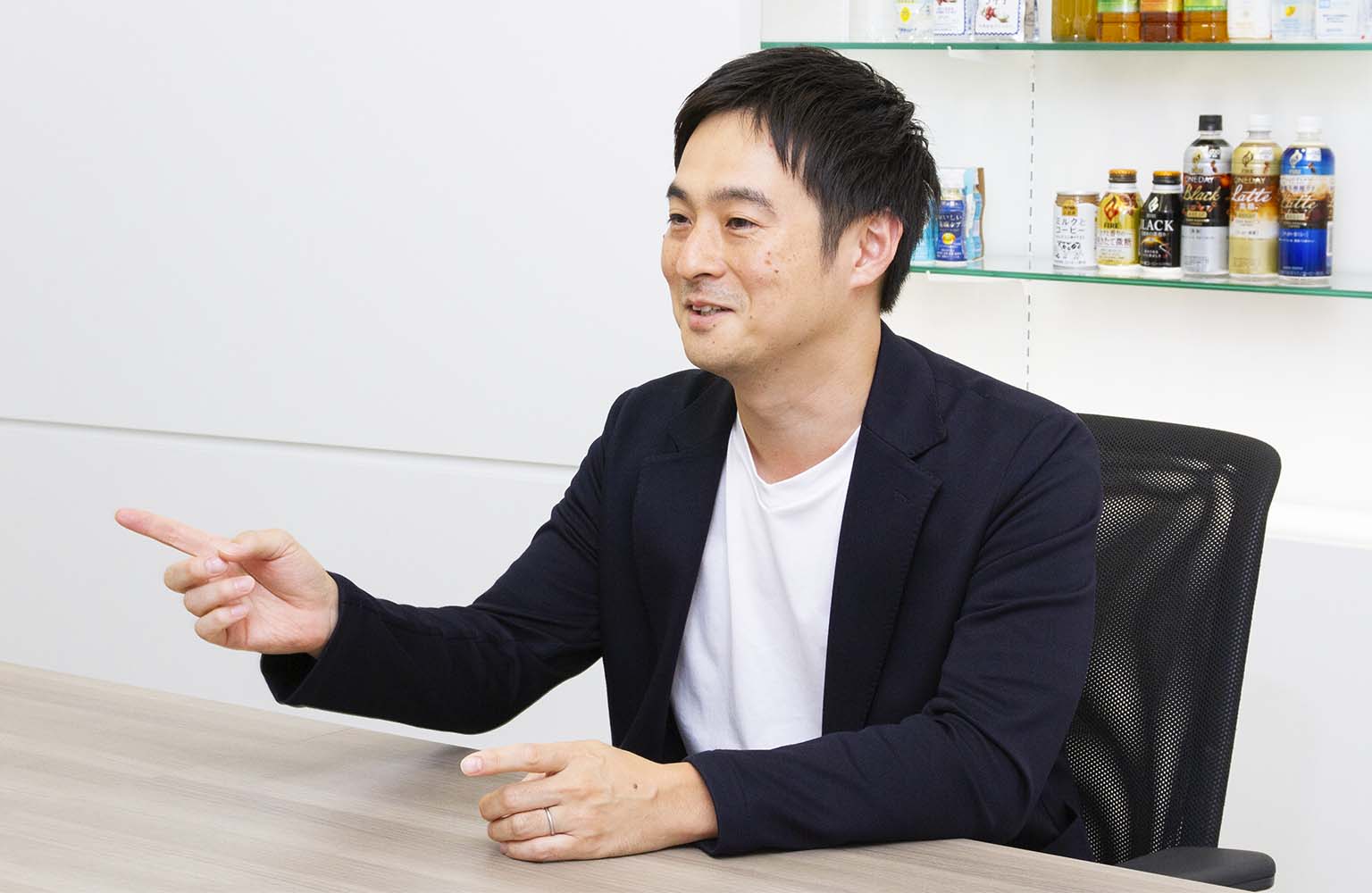Overcoming the challenges common to CVC funds—What Kirin aims to achieve through synergy with startups
We asked Kirin about their stance in working with startups and their internal communication tactics to succeed in business collaboration.

Written by the Universe editorial team
Open innovation, where major companies generate new value not only with their own resources but by working with startups, is attracting more and more attention. The number of new CVCs (corporate venture capital) in Japan are on the rise, but we also hear that poor internal/external communication is hindering collaboration discussions.
The KIRIN HEALTH INNOVATION FUND, Kirin Holding’s CVC fund launched in 2020, has made many efforts to succeed in startup collaborations, including the kickoff of an internal initiative to promote open innovation. We asked Sho Tsugawa, Senior Manager of the Health Science Business Departement, who has led Kirin’s CVC activities, about their actions that could be of help to other CVCs.
(The names of departments and roles may have changed after the interview.)
The “health sciences” side of Kirin
Why did Kirin form a CVC fund?
Throughout the company’s long history, our businesses have mainly centered around manufacturing and sales of alcohol and other beverages. The fermentation technology which sits at the core of our business is used in various other areas.
Alcohol and beverages will continue to be our core businesses going forward, but considering the decrease of the domestic population, these businesses will not be easy to grow.
Therefore, building upon our fermentation technology and past business experience, we decided to generate a new value proposition which could solve social issues. Our aim was to become a “leader in Creating Shared Value (CSV),” a goal set by the Kirin group.
We especially focused on the social needs to maintain health and prevent illnesses. Since we knew that this area will continue to expand, we had prospects that Kirin will be able to contribute here. We are rapidly expanding into this area by defining it as “health sciences.”
However, since this area is new to Kirin, we felt that our own research and business development capabilities were not sufficient to address customer expectations.
Members inside the company were starting to acknowledge the need for open innovation. With the aim of creating value by working with startups that offer state-of-the-art technologies and services in the health sciences sector, we established our CVC fund in 2020.

A CVC that thinks together with the startup
How is Kirin’s experience with existing businesses leveraged for startup collaboration?
We can offer mainly two things to startups.
One is our fermentation and quality control technologies that the company has nurtured through its long history. Fermentation is used in various fields around the world and is attracting attention, and because you handle microbes, fermentation requires very careful control.
In the complicated process of producing compounds and ingredients useful for human beings and manufacturing large quantities of food and beverages while maintaining the quality, Kirin can potentially contribute in many ways leveraging past experience. We think this is an area where we can combine our assets with the startups’ assets to create new value.
Another is our network and brand that we have built through our B2C businesses.
The sales network and customer trust we have built by delivering products to the mass market should be of use to startups when expanding sales channels and promoting their brand.
A good example is our collaboration with DAIZ, producer and provider of plant-based “Miracle Meat.” Demand for plant-based meat is expected to grow, and now the startup is entering an important stage of having customers eat their product and understand its good points. We offered a small help by developing and offering dishes using Miracle Meat at our Kirin City restaurants all around Japan, and introducing the product to restaurants in Japan who are Kirin Brewery Company’s customers.
Another example is an initiative between Fast Beauty which operates their hair color salon “fufu” and Kirin Group’s FANCL. The two companies have started referring customers to each other to test the affinity between beauty and health and have been discussing how to address women’s needs to “be beautiful and healthy.”
Although I cannot share much with you yet, various collaborations with startups are happening in the research domain, and I feel that open innovation is taking root thanks to our CVC activities.
The initiatives we are working on with each startup are still in their early stages. Collaborative activities between major companies and startups sometimes end after the initial testing phase, but we consider CVC activities as a process of repeating POC in the medium to long term.
We are willing to put our heads together and look for various possible stories,* and try to look for ideas on collaboration that can contribute to startups’ growth. I believe that by adding these kinds of activities one by one ultimately leads to an impactful business in the future.

Changing the “difficulty of collaboration” in major companies
I imagine working with the business side is indispensable in planning collaboration with a startup. Is there anything you do to make internal communication easy?
That is exactly true. CVC activities cannot be done without the involvement of business units or research centers. However, in many cases the hurdle is high to start working on an uncertain activity for the future given we all have many tasks at hand that we have to deal with. I think this is a challenge CVC funds in any company often come across.
Here, the key is to onboard members who can proactively lead CVC activities. As part of our trial, we started an initiative named “Open Innovation Partners” at Kirin.
Kirin has many group companies each with their own team dedicated to creating new businesses. Our research center also holds many researchers who have different roles and belong to different research centers, for example beverages or materials.
Open Innovation Partners is an initiative where one or two members each from different teams get together to promote open innovation. We organize meetup sessions on a regular basis to have them discuss potential collaborations by looking at new technologies and services, and also host study sessions or networking events.
We do not have any special restrictions, and each member has the discretion to learn from outside the company or start cross-departmental collaborations. The possibility of starting a new internal initiative relies largely on the motivation of individuals, so we support this activity by focusing on how best to get them excited.
The CVC team is at the core of internal collaboration. What kind of members do you have in your team?
We have three members in our team. First is me, who started as an alcohol sales rep at Kirin Brewery. I also experienced working in China and promoting overseas business for the headquarters. I’m hoping to leverage my experience with overseas business and sales to support startups.
The second member Takano has also experienced alcohol sales, and human resources. With his experience working for a startup on secondment and his positive character, he is driving collaboration and investment by communicating very closely with startups.
The third member Fukaya has experienced legal affairs and alcohol sales. After studying abroad, he joined the team fairly recently. Since he has studied entrepreneurship, he is contributing right away to brush up overall strategies not limited to individual investment deals.
I can see your team is very startup-friendly, consisting of members with experience working in a startup and learning entrepreneurship.

Since we resonate with the startups’ visions and walk together with them, we should not only put the money in but help them grow. In the process, we can understand new areas and look for growth opportunities. I think this is what our relationship is like, where we give positive impacts to each other. Therefore, in promoting CVC activities, we need to be a team that understands the startups’ culture and communicate well with them.
I think some people working for major companies start thinking about monopolizing the startups’ technologies and utilizing them for their own benefit. However, that is not the stance that we should have. Rather, we need to talk with the startups thinking about how their technologies and services can be useful for society and how we can contribute to what the startups want to do.
One of our team values we hold on tightly from the beginning is “With Startups.” We keep this in mind not only when talking with startups but also when communicating with internal business units.
What we value together with business synergy
What do you place importance on when building a business with a startup?
The business synergy is of course important, and we always think about what kind of collaboration is possible in the future.
However, that is not it. We also value the visions and aspirations of the CEOs. When major companies think about collaboration with startups, they often tend to do a deep-dive into business details and technological strengths, forgetting the people aspect. But if you come to think of it, a company gets larger when dozens or hundreds of people resonate with what one single person is doing and get together. Therefore, people’s aspirations are important in corporate activities and should not be overlooked. This is why we carefully check whether we can resonate with a startup’s goals and aspirations when starting business collaboration.
Is there any specific feeling of a CEO that left you an impression?
Thankfully, I have opportunities to speak with many CEOs and each and every one of them are exciting for me.
This is only one example, but I remember very well what CEO Yano told me. He leads YuaBread, a company that offers a frozen bread subscription service. Understanding from his business, I first thought that he had strong feelings about “delivering tasty bread in the most tasty state.”
However, as I spoke with him several times, I learned that he had lived together with his grandfather for many years, and seeing his grandfather getting old and unable to eat what he wanted was what prompted CEO Yano to establish the company.
I learned CEO Yano’s passion for health and resonated with his vision to “build a world where people can enjoy eating healthily,” the basis of his business which at first glance may seem irrelevant to health sciences.

MaRI was another interesting portfolio company. This startup develops a device to diagnose and cure sleep apnea syndrome. The business is based on advanced technology, but what started the company was actually “sleep problems between married couples.” Sleep problems not only affect the person with the problem, because a partner sleeping in the same room could suffer from lack of sleep caused by snores. Therefore, the CEO founded the company with the vision of “improving sleep to maintain relationships.” The company name MaRI comes from “Marital Relationship Improvement.”
The businesses of these startups may not seem directly connected to what we do at Kirin, but they make me realize that they, like us, are aiming to create a world where people can lead healthy daily lives. Learning their views often gives us new ideas for collaboration.
“Investing” is not the goal
You have been moving collaborative activities forward based on what you learned from the startup CEOs. What kind of CVC activities do you plan for the future?
I would like to move on to the next phase where we prioritize “outcomes” with the startups even more.
Having both internal and external stakeholders think of Kirin’s CVC activities as a given is what I hope to achieve. To do so, achieving results is important. I’m struggling with my members every day figuring out how to prepare impactful collaborations and how to achieve results.
Three years have passed since we started CVC activities, and thanks to everyone’s support, we have gained understanding from each field and built up our network and internal structure. The foundation is ready for us to start going after results. Respecting startups is of course a must, but in addition to that, we would like to start initiatives where both sides can achieve returns.
The Open Innovation Partners initiative is actually bearing fruit. Many inquiries from business units and research centers are coming in recently, generating collaboration in various areas. We receive requests not only to find companies or technologies, but also to “participate in discussions for the future.” Our activities are leveling up compared to when we first started.
The true essence of our mission in Kirin is not about investing in startups, but it’s about promoting Kirin’s open innovation to increase our value. Therefore, even if we were not able to invest in a startup, we talk with them proactively if there is potential for collaboration with our business unit or research center. In that sense, I’m hoping to break the boundaries of CVCs.
Although Kirin’s core is the health sciences area, we have many business units, research centers, and networks. Because we have built the foundation of collaboration with each stakeholder, we would like to further communicate with the startups and look for an exciting future ahead.